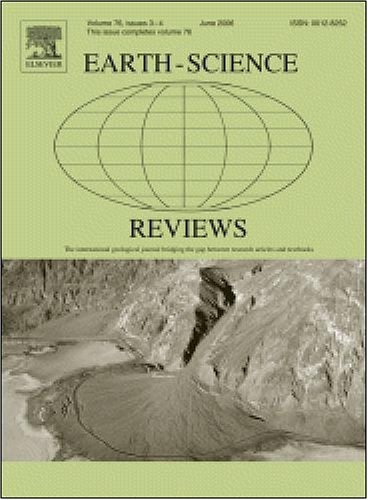First comparison of subsidence/uplift rates between Copernicus European Ground Motion Service data and long-term MIS 5.5 geological record in Mediterranean regions
IF 10
1区 地球科学
Q1 GEOSCIENCES, MULTIDISCIPLINARY
引用次数: 0
Abstract
The European Ground Motion Service (EGMS), a component of the Copernicus Land Monitoring Service, offers a valuable tool for investigating vertical ground motion in coastal regions that are subject to different natural and anthropogenic processes. To conduct effective coastal assessments, it is essential to consider the multiscale interactions of these processes. This review presents a methodology for comparing EGMS Ortho (Level 3) data, based on Sentinel-1, and calibrated with measurements from the Global Navigation Satellite System (GNSS) and long-term rates based on the markers of the Marine Isotope Stage (MIS 5.5; Late Pleistocene). This study examines the Italian and Greek coasts, encompassing a range of geodynamic settings. In stable crustal segments, such as Sardinia, the EGMS Ortho (Level 3) data roughly align with both GNSS and post-MIS 5.5 rates. However, long-term based observed variations are considerably below the current 1 mm/yr EGMS precision. Conversely, in foreland basins, EGMS maps show higher values than GNSS data, which reflect regional interactions between ongoing tectonics and compaction. Local discrepancies between EGMS and GNSS in industrialized areas are attributable to industrial activities, as evidenced by the EGMS subsidence rates (8 mm/yr) observed in Ravenna, which exceed regional long-term estimates (0.8 mm/yr). In seismically active regions, such as Calabria and Sicily (e.g. the Messina Strait), the data reveals complex short- and long-term interactions linked to the seismic cycle. Conversely, in volcanic areas, like Campi Flegrei, Mt. Etna, Santorini and Nisyros, the EGMS data proves most valuable for highlighting complex volcano-tectonic movements. The findings of this study can be extended to other areas worldwide.
首次比较哥白尼欧洲地面运动服务数据与地中海地区长期MIS 5.5地质记录之间的沉降/上升速率
欧洲地面运动服务(EGMS)是哥白尼土地监测服务的一个组成部分,为调查受不同自然和人为过程影响的沿海地区的垂直地面运动提供了一个有价值的工具。为了进行有效的沿海评估,必须考虑这些过程的多尺度相互作用。本文介绍了一种比较EGMS Ortho (Level 3)数据的方法,该数据基于Sentinel-1,并使用全球导航卫星系统(GNSS)的测量数据和基于海洋同位素阶段(MIS 5.5;晚更新世)。本研究考察了意大利和希腊海岸,包括一系列地球动力学环境。在稳定的地壳段,如撒丁岛,EGMS Ortho (Level 3)数据大致与GNSS和mis 5.5后的速率一致。然而,长期观测到的变化远低于目前1毫米/年的EGMS精度。相反,在前陆盆地,EGMS图显示的数值高于GNSS数据,反映了正在进行的构造和压实作用之间的区域相互作用。在工业化地区,EGMS和GNSS之间的局部差异可归因于工业活动,在拉文纳观测到的EGMS沉降率(8毫米/年)超过了区域长期估计(0.8毫米/年)。在地震活跃地区,如卡拉布里亚和西西里岛(如墨西拿海峡),数据揭示了与地震周期相关的复杂的短期和长期相互作用。相反,在像Campi Flegrei、mount Etna、Santorini和Nisyros这样的火山地区,EGMS数据被证明在突出复杂的火山构造运动方面最有价值。本研究的结果可以推广到世界其他地区。
本文章由计算机程序翻译,如有差异,请以英文原文为准。
求助全文
约1分钟内获得全文
求助全文
来源期刊

Earth-Science Reviews
地学-地球科学综合
CiteScore
21.70
自引率
5.80%
发文量
294
审稿时长
15.1 weeks
期刊介绍:
Covering a much wider field than the usual specialist journals, Earth Science Reviews publishes review articles dealing with all aspects of Earth Sciences, and is an important vehicle for allowing readers to see their particular interest related to the Earth Sciences as a whole.
 求助内容:
求助内容: 应助结果提醒方式:
应助结果提醒方式:


